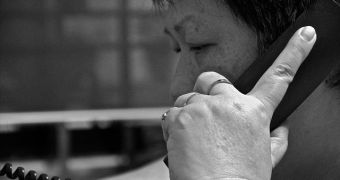A security company has developed a sophisticated way to identify if, during a phone call, the individuals on the other end of the line are who they claim to be. By analyzing the “line noise” of an audio call, experts can determine if a fraudster is trying to impersonate someone as part of a scam.
The organization that implements this technology is called Pindrop, and its representatives say that they can identify the type of phone (mobile or landline) used and even find the approximate location of the caller, MIT’s Technology Review informs.
Call routing infrastructures, phone exchanges and even the handset itself form the unique fingerprint that differentiates one call from another.
For instance, calls made using Internet services are different from the ones made using regular phones. Older telecommunications infrastructures also create a particular line noise that’s not similar to the one produced by modern systems.
“The telephone network has been around for a long time, so there are very different fingerprints for different regions,” Mustaque Ahamad, a professor at Georgia Tech University and co-founder of Pindrop, said.
It’s well known that Nigerian and other scam artists often place phone calls trying to social engineer bank employees with the purpose of obtaining sensitive information. In some scenarios, the scammers spoof the caller ID to match the victim’s number when calling a financial institution.
All these malicious tactics could meet their doom if the system developed by Pindrop becomes widely implemented. They’re already working with some major banks and the results don’t benefit only the institution, but also the customers, because they’re not asked so many security questions when requesting a service.
Because not only one parameter is taken into consideration when analyzing the line noise, it would be very difficult for crooks to spoof it.
Even if they make sure that the handset they use matches the area they want to appear to be calling from, the telephone company is not easy to convince to change its equipment as the fraudsters want.

 14 DAY TRIAL //
14 DAY TRIAL //